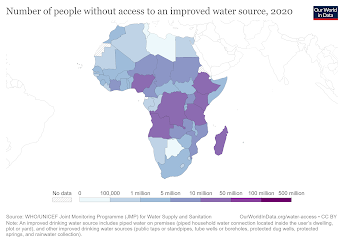Looking at a Sustainable Future

Hi and welcome to my final blog post! Over the past few weeks I have explored different issues relating to the water and sanitation crisis in Africa. For this final post, I will briefly explore the road to a sustainable future for Africa's water and sanitation. Briefly mentioned in previous blogposts is Sustainable Development Goal 6 (SDG 6) - to ensure availability and sustainable management of water and sanitation for all by 2030 ( UN 2018 ). The proposal of SDG 6 is an improvement of the Millennium Development Goal 7 (MDG 7) which targeted to decrease the population that did not have sustainable access to water and basic sanitation by 50% before 2015 but was not achieved. SDG 6 has additionally dimensions to address the faults of MDG 7, including affordability, accessibility, and water quality ( Weststrate et al. 2018 ). Figure 1: Outline of SDG 6 Targets Now that we are swiftly approaching 2030, it is important to track any progress and reflect...



